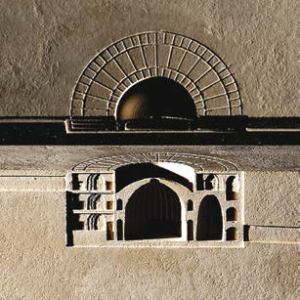Project icons
Representation architecture in the work of Renato Rizzi
Keywords:
icon, representation, architecture, design, RizziAbstract
Due to its inner material need, an architectural work is always controversial: each architectural form has its own specific aesthetic dimension through which the figurative relationships with the environment become the urban life fundamental. This polemos is rooted in the archaic essence of architecture; it deals with the representation of values, hopes and collective expectations of city inhabitants. It is through the tense interplay between the uniqueness of contemporary architecture and the aesthetic diversity of its products that representation is intended to shape the reasons and relations set among the invisible world of ideas, the architect productive subjectivity and the material complexity of architecture. The notion of representation as figurative construction is grounded on the definition of a new similarity concept. What the project imitates by means of the icon is a particular figurative and conceptual synthesis which sees architectural work as the highest tension point between the material world and the spiritual world, i.e., between the visible and the invisible. As project icon, Renato Rizzi’s work wound brings into play the fundamentals of the individual architectural work.
Downloads

Published
How to Cite
Issue
Section
License
Open access policy
A&P Continuidad is a non-profit and open access publication. According to Mexico Declaration on Cultural Policies, the journal distribution is submitted to Creative Commons Attribution-Noncommercial-ShareAlike 4.0 International Public License (CC BY-NC-SA). “Neither the commercial use of the original work nor that of the possible derivative works are allowed. The distribution of derivative works should be submitted to the license regulating the original work. This license is not free.”
A&P Continuidad authorizes the partial or full reproduction of texts and graphs provided that the source is cited. Authors are exclusively responsible for the criteria expressed in the articles which do not necessarily reflect the opinion of the Editorial Committee or that of the Direction Board. The copyright of the published articles pertains to their authors or publishers.
Transfer of rights
The acceptance of an article to be published implies the author’s transfer of rights to the journal. Authors continue to have the right to use the material in future books or publications, approve or veto the republication of their works as well as the rights related to patents or other rights. Transfer of rights form may be downloaded here.























 This OJS site and its metadata are under a
This OJS site and its metadata are under a 

